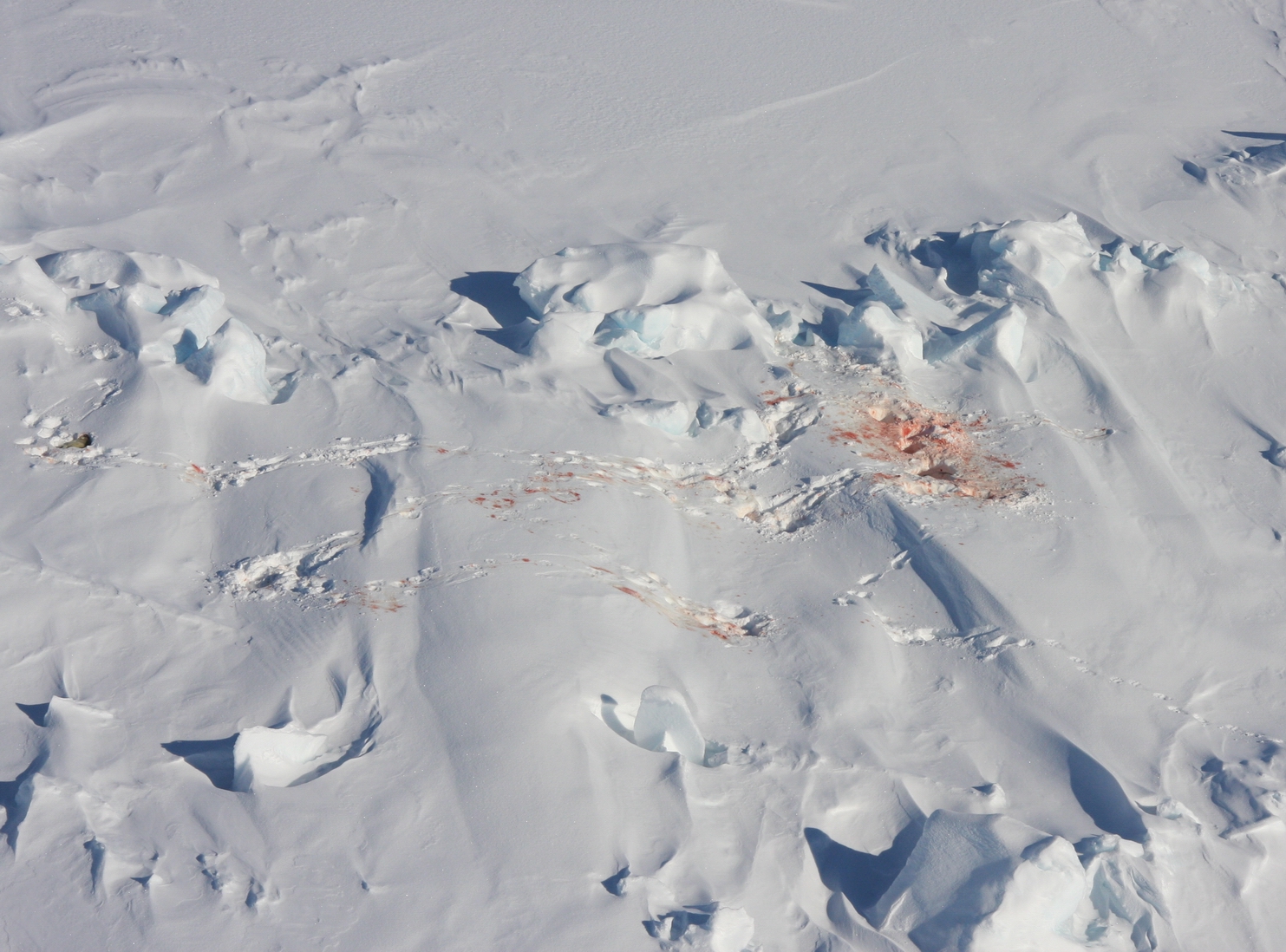E-mail: pilfold@ualberta.ca
Polar Bear Foraging Ecology – Ph.D. Project
Polar bears (Ursus maritimus) are a wide ranging, non-territorial apex predator. Their primary prey include ringed seals (Pusa hispida) and bearded seals (Erignathus barbatus), which are elusive, highly mobile prey. Although it is appreciated that polar bears require the sea ice substrate to hunt seals, little is known about the demographic structure of seals preyed on, or how particular sea ice habitats may facilitate polar bear foraging. Additionally, while larger scale population relationships between polar bears and ringed seals have been hypothesized, mechanistic understanding of the relationship is lacking. Using a large database of seals killed by polar bears in spring (April-May; n = 650) as well as cohort and body condition data, I will be focusing my Ph.D. on fundamental aspects of polar bear foraging ecology:
- Determine the demographic structure of seals killed and investigate proximate mechanisms for the onset of polar bear hyperphagia in spring.
- Define sea ice habitat characteristics which influence predatory success.
- Use polar bear predatory behaviour to track the spatial distribution of ringed seal breeding lairs between periods of low and high ringed seal natality.
- Examine environmental and behavioural drivers of predation success.
- Determine the population-level relationship between ringed seals and polar bears, including the influence of polar bear predation on ringed seal population growth.
- Model physiological responses to scavenging seal carcasses as a function of abiotic conditions.
Within these questions lie central ecological questions:
- Is density of kills sufficient in modelling foraging habitat quality for a large carnivore?
- How does a wide-ranging non-territorial apex predator distribute itself in relation to foraging patches? Does interference competition lead to a phenotype-limited truncation of different age-classes?
- What is the energetic cost of avoiding infanticidal males for females with young?
- How do the predator-prey population dynamics between two K-selected carnivore species function when the prey outlives the predator?
Ringed seal pup kill from air. Pup has been dug from lair along pressure ridge and consumed
Previous Work
I graduated from the University of British Columbia in 2007 with a Bachelor of Science. Post-graduation I worked for an environmental consulting firm on implementing constructed ecosystems for water treatment, as well as ecosystem restoration. In 2009, I spent six months working on a wildlife reserve in South Africa, predominately tracking the hunting and movement behaviour of the reserve’s predators, including lions, leopards, cheetahs, wild dogs and hyenas, and the effects on the population dynamics of their prey.


